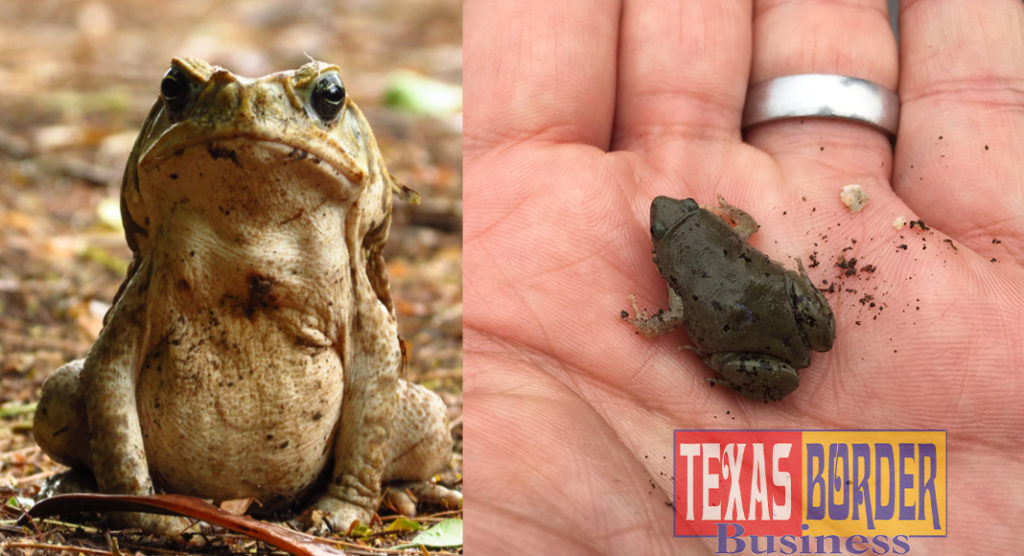By John Brush, Urban Ecologist, Quinta Mazatlan

Texas Border Business
September is the summer percolating into autumn, an ever-so-slight relaxation from the peak heats of July and August, but with only the first whispers of cooler falls. It largely feels like an extension of the summer months, full of bright, hot days and many of the same birds and butterflies as the previous three months.
Where it differs most strongly is in the rains; September is typically our rainiest month of the year, averaging around 5 inches, or about 1/5th of the Lower Rio Grande Valley’s annual average. The relative deluge serves as a wakeup call to one group of animals in particular – the amphibians (we are ignoring mosquitos).
While many terrestrial organisms respond to rains – insects hatch, flowers bloom, birds gorge themselves in the aftermath – amphibians are especially dependent on precipitation, as most of them need fresh water to reproduce. After a heavy rainfall, choruses of frogs and toads sound from roadside ditches, inundated retention ponds, flooded yards, and a variety of wetlands. These September songs, given by males in the hope of attracting a mate and defending a prime location, are a precursor to the burst of baby frogs and toads soon to follow.
Despite being a semi-arid region, over 20 species of amphibian live in the Lower Rio Grande Valley. Our most familiar species are those that live in our towns and cities, neighbors to find and meet. Walking around your neighborhood or local park after a rain will likely reveal Gulf Coast Toads and Giant Toads. Both give trilling calls; the former a steady rasp and the latter a booming rattle.
Two of our most common frogs are named after the Valley’s eponymous river: the Rio Grande Leopard Frog and the Rio Grande Chirping Frog. Leopard frogs can be found almost anywhere, whether urban wetlands or country ponds, their long-distance hops carrying them feet at a time. Chirping frogs break the general trend of only males being vocal. In these small, 1-inch frogs, the females also call, giving slightly quieter versions of the distinctive chirps of the species. These “deceptive” calls are thought to encourage males to vocalize, thus allowing the female to assess the males’ fitness.
In more rural ranching and agricultural lands (though sometimes in suburban habitats), you may hear the odd calls of the microhylid frogs. Western Narrow-mouthed Toads (which despite the name are actually frogs) give a high-pitched “beeeeeeee” call, sometimes compared to the buzz of an angry bee. Its relative, the Sheep Frog, gives a startlingly good impression a bleating sheep. Perhaps the strangest call of all, though from a different family of frogs, is that of the Mexican Burrowing Toad, a drawn-out “whooooaaaa” exclusively heard after torrential rainfalls in Starr County.
Amphibians have a lot of strange calls, behaviors, lifestyles, and are overall rather fascinating. Enjoy the chorus of frogs and toads at Quinta Mazatlán in McAllen, Texas. Follow the Quinta Mazatlán YouTube Channel, Facebook and other social media platforms to learn more about our natural heritage in South Texas.
Captions & Photo Credits
Giant Toad (John Brush) – Giant Toads are one of our most commonly see amphibians in Valley towns and cities.
Western Narrow-mouthed Toad (public domain) – Narrow-mouthed Toads are known for sheltering in tarantula burrows
Sheep Frog (Timothy Brush) – Found only in South Texas, Sheep Frogs give convincing imitations of distant sheep.














